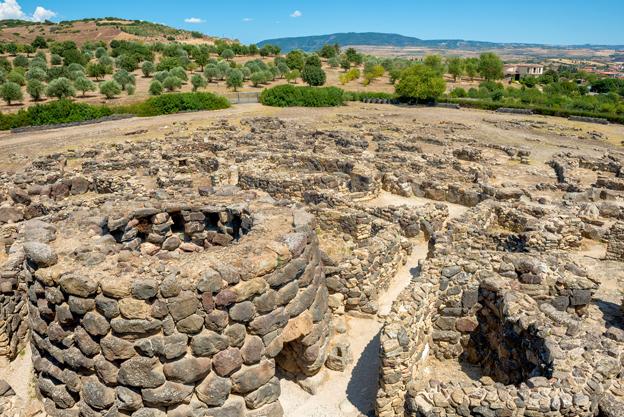Sardinia: The Island of the Mysterious Nuraghi
ITA:

The ‘nuraghi’ represent Sardinia’s greatest – and most mysterious - archeological treasure: 8,000 ancient megalithic buildings found nowhere else in the world.
The Nuragic civilization began in the Bronze Age (1800 BC), as the evolution of pre-existing cultures present on the island of Sardinia since Neolithic times. The Nuragic civilization takes its name from the nuraghi, circular defensive towers-fortresses in the form of truncated cones built of dressed stone for which no parallel exists anywhere else in the world. Most of them were built on high ground, near the villages, and had defensive and military functions. Some reach a height of 22 meters, such as the nuraghe Santu Antine Torralba; others were structured as interconnected towers, making them imposing fortresses.
Among the most interesting nuraghi sites are: Nuraghe Arrubiu (Orroli, Nuoro), possibly the largest nuraghe, along with Su Nuraxi (Barumini, Cagliari); the Tombs of the Giants Li Lolghi e Li Muri at Arzachena (Sassari); the mysterious Tophet found in the urban area of Tharros (Cabras, Oristano)... was it a sacred burial place for children or a place where human sacrifices took place?
The nuraghi were discovered in the 1930s and were recognized a UNESCO World Heritage site in 1997.
I nuraghi rappresentano il più grande - e misterioso - tesoro archeologico della Sardegna: 8.000 antiche costruzioni megalitiche che non si trovano in nessun'altra parte del mondo.
La civiltà nuragica è iniziata nell'età del bronzo (1800 aC), l'evoluzione di culture preesistenti presenti sull'isola fin dal Neolitico. La civiltà nuragica prende il nome dai nuraghi, torri-fortezze circolari in forma tronco conica per le quali non esiste un parallelo in nessun’altra parte del mondo. La maggior parte dei nuraghi sono stati costruiti su un terreno elevato, vicino ai villaggi, con funzioni difensive e militari. Alcuni raggiungono un'altezza di 22 metri, come il nuraghe Santu Antine di Torralba; altri sono stati strutturati come torri interconnesse, rendendoli imponenti fortezze.
Tra i siti nuraghi più interessanti ci sono: Nuraghe Arrubiu (Orroli, Nuoro), forse il più grande nuraghe, insieme a Su Nuraxi (Barumini, Cagliari); le Tombe dei Giganti Li Lolghi e Li Muri a Arzachena (Sassari); il misterioso Tophet nella zona urbana di Tharros (Cabras, Oristano) ... era un luogo di sepoltura sacro per i bambini o un luogo dove si tenevano sacrifici umani?
I nuraghi sono stati scoperti nel 1930 e sono stati riconosciuti patrimonio mondiale dell'UNESCO nel 1997.











